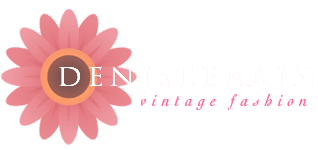Because experience with fabric really ranges among vintage fashion enthusiasts, I decided to start a series on some of fabrics you are likely to find.
I am posting a once-a-week x possibly forever (!) vintage fabric workshop in the Vintage Fashion Guild public forum. If you’d like to join in, you’ll find the workshop under “Fabric Friday” HERE.
You can also follow along here in my blog, where I intend to post some of the same content. Please ask questions! I love questions.
First let me tell you a little about my own history with fabric:
Some of my fabric books.
One summer, I read the Fairchild’s Dictionary of Textiles cover to cover (all 14,000 definitions—don't I know how to have fun?) and chose a collection of fabrics that seemed to come up in vintage clothing descriptions and in my observations. I didn’t, and don’t, consider myself an expert on the subject, but I love learning about fabrics.
I really have to know fabric better all the time. I sell vintage clothing, and my buyers and I want to know what an item is made from. To know this is to tell someone whether she will be allergic, how to wash or clean the item, predict how it will take dye. It is to know how fine it is, how long it will last, how the color will hold up. It helps make certain the age of the item. It gives a better sense of how it will feel when worn. Buying clothing online is hard enough, and knowing all you can about the item is just smart.
The year after I read the Fairchild’s I was a board member of the Vintage Fashion Guild, and I proposed the idea of the VFG website having a fabric resource. Everyone thought this was a good idea, so I got started on it. You gotta watch what you promise, because I worked five years putting just the start of the Fabric Resource together! Fabrics are complicated. As one article in an issue of the great American Fabrics magazine begins:
The history of textiles is the history of the world...politically, socially, economically.
Gulp.
So much of human history has been interwoven with fabrics—any one fabric can take you back to ancient civilizations, or even prehistoric times. This makes many of them difficult to quickly summarize. I noted one of the fabrics in the Fairchild’s that was particularly mind-boggling for me, frisé.
frisé [free-zay’] 1. Originally the finest grade of linen made in Friesland, The Netherlands. It was strong, stout, grained, and well-bleached. 2. A French term for curled. 3. A coarse ratiné fabric that is made with slub yarns in a plain weave ( See RATINÉ 1.) 4. A looped pile fabric usually of uncut loops that may have a pattern cut into them. This term sometimes is used for TERRY CLOTH or BOUCLÉ FABRIC. 5. A coarse, stout cotton or linen fabric that is made in a plain weave with a flat, wiry texture and a pronounced rep or rib. Made in imitation of the worsted or mohair pile fabric known as FRIEZE. All fabrics listed in 1.—5. are used for upholstery. 6. A cut pile carpet of twisted yarns in solid color or of varicolored yarns.
You can see there are divergent histories here, along with terms that may not be familiar (they certainly weren’t all familiar to me). There are comments about usage, origins of the name, related fabrics. Not all fabrics have this much complexity in their definitions, but some have more.
I’m not trying to scare anyone off. On the contrary, I hope that knowing about fabric is interesting and inspiring to you as much as it is to me—or that it could be.
Starting with some basics
Before 1960, clothing rarely had any fabric content and care labeling. The Textile Products Identification Act of 1960 mandated fabric content labeling in garments. This information was usually printed on a hang tag that was removed before wearing the clothing. Our familiar sewn-in care tags were required starting in 1972. This was a huge step in making clothing easier to maintain. Now, we take these tags for granted, but our forebears had to know enough to make good washing and other care decisions themselves.
The fiber is from what the fabric is made, while the fabric is the finished product. Let me say that again, because it is really important:
The fiber is from what the fabric is made, while the fabric is the finished product.
Fibers can be natural: mainly cotton, wool, silk, and linen; or manufactured: mainly rayon, acetate, acrylic, nylon, and polyester.
The fibers can be woven or knit into fabric. The most common weaves are plain, satin and twill.
The anatomy of the basic weaves: plain, satin, and twill, along with knit
Fabrics have a two-part name: One part is the fiber or fiber blend, the other is the fabric type. If you see a fabric listed as silk taffeta, you are being told that the fiber is silk, and the fabric type is taffeta. Likewise, a rayon jersey is a jersey knit fabric made of rayon fiber.
Next time: How to determine the fiber of a fabric


